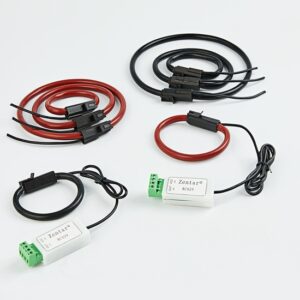Type B current transformer Application
In recent years, the use of Type B RCDs has increased due to their ability to provide comprehensive protection against all types of residual fault currents.
Type B RCDs are widely used in many industries, including electric vehicle charging, photovoltaic systems (solar panels), mining, tunnels, shipping and any installation where there is a risk of direct current flow. This technology comes closest to providing full protection against all known residual fault currents.
Type B RCDs are used where DC residual currents may occur, such as three-phase rectified power supplies, and also in micro-generators or SSEGs (small generators), such as solar panels and wind generators.
At the same time, IEC 62109-1 specifies the requirements for inverters used in photovoltaic systems and clearly states that only Type B RCDs can be used in such systems, as Type A or AC RCDs cannot provide adequate protection.
The Type B RCD provides protection against DC residual currents and AC residual currents up to 1000Hz.
Types of Type B current transformers
– A type B current transformer is a type of transformer that can measure both AC and DC currents. It is often used for electric vehicle (EV) charging applications as it can detect residual currents and protect against electric shocks¹.
– EV charging applications can be classified into three levels based on load, voltage, phase and charging time²³:
– Level 1: Uses 120V on-board charger | 2-5 miles per hour charging
– Level 2: Uses on-board charger at 240V or 208V, up to 80A but typically 30A | 10-11 miles per hour charging
– Level 3: Generates DC from 240V or 480V single or three phase sources | 50-100 miles per hour charging
There are several different types of Type B current transformers available on the market, each with its own unique set of features and benefits. Some of the more common types include
Split-core current transformers – These transformers are designed to be installed around an existing cable without having to disconnect it from the system.
Clamp-On Current Transformers – These transformers are designed to be clamped onto an existing cable and are ideal for retrofit applications.
Solid-Core Current Transformers – These transformers are designed to be installed around a cable during the initial installation of the charging system.
Choosing the right type of current transformer depends on several factors, including the size of the cable, the location of the charger and the specific requirements of the application.





